

Home Site Search Contact Us Subscribe
|
|
|
|
Hudson World Bridge: An architect's proposal to span the Hudson River would be a gathering place like no other. By Fred Bernstein -- Eytan Kaufman [images]
By Fred Bernstein April 18, 2007 In 2002, I
reviewed a show of designs for "A New World Trade Center" at the Max
Protetch Gallery in Chelsea. One proposal, by Eytan Kaufman, stood out from all
the others. Kaufman's project included a bridge across the Hudson River near
Ground Zero. Kaufman realized that the redevelopment of Ground Zero could and
should extend beyond the original World Trade Center site. (In fact, as
subsequent events have proven, trying to squeeze a memorial, office buildings,
stores, museums, train stations, and parking lots into 16 acres shortchanges
them all.) And Kaufman had realized that a building over New York Harbor had
the power to be especially stirring, not only because of the evocative power of
water, but because that one body of water contains symbols of Freedom (the
Statue of Liberty) and diversity (Ellis Island). My own Twin Piers proposal was
directly inspired by those aspects of Kaufman's bridge.
Hudson World Bridge Team : Eytan Kaufman (Principal Architect), Andrea Ljahnicky (Architect, Associate Designer), Martin Newton (Architect, Digital Rendering), Kazushi Miyata Digital Drawing) Project Engineers: Ove Arup and Partners: Pete Tillson (Associate Principal), Iraklis Lampropoulos (Engineer)
Eytan Kaufman, Int’l. Assoc. AIA, started his New York City design and development practice dedicated to conversions in SoHo and Chelsea in 1977. Born in Israel, he received a B.Arch degree from the Technion Israel Institute of Technology, and came to the United States in 1966 to study and teach with R. Buckminster Fuller at Southern Illinois University where he received a M.Sc. degree in 1968. Kaufman taught Urban Design at New York University and Pratt Institute from 1971 to 1976.
Fred Bernstein has written about design for more than 15 years. He also contributes to the New York Times, Metropolitan Home, Oculus, and Blueprint.
|
(click on pictures to enlarge) 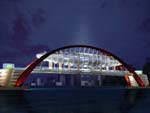 (Eytan Kaufman) Hudson World Bridge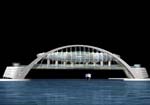 (Eytan Kaufman) -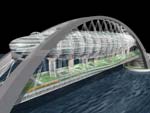 (Eytan Kaufman) -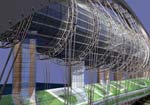 (Eytan Kaufman) - (Eytan Kaufman) Elevation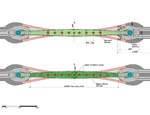 (Eytan Kaufman) Park plan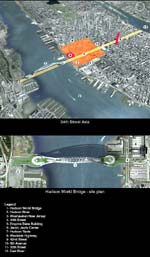 (Eytan Kaufman) Site plans |
© 2007 ArchNewsNow.com